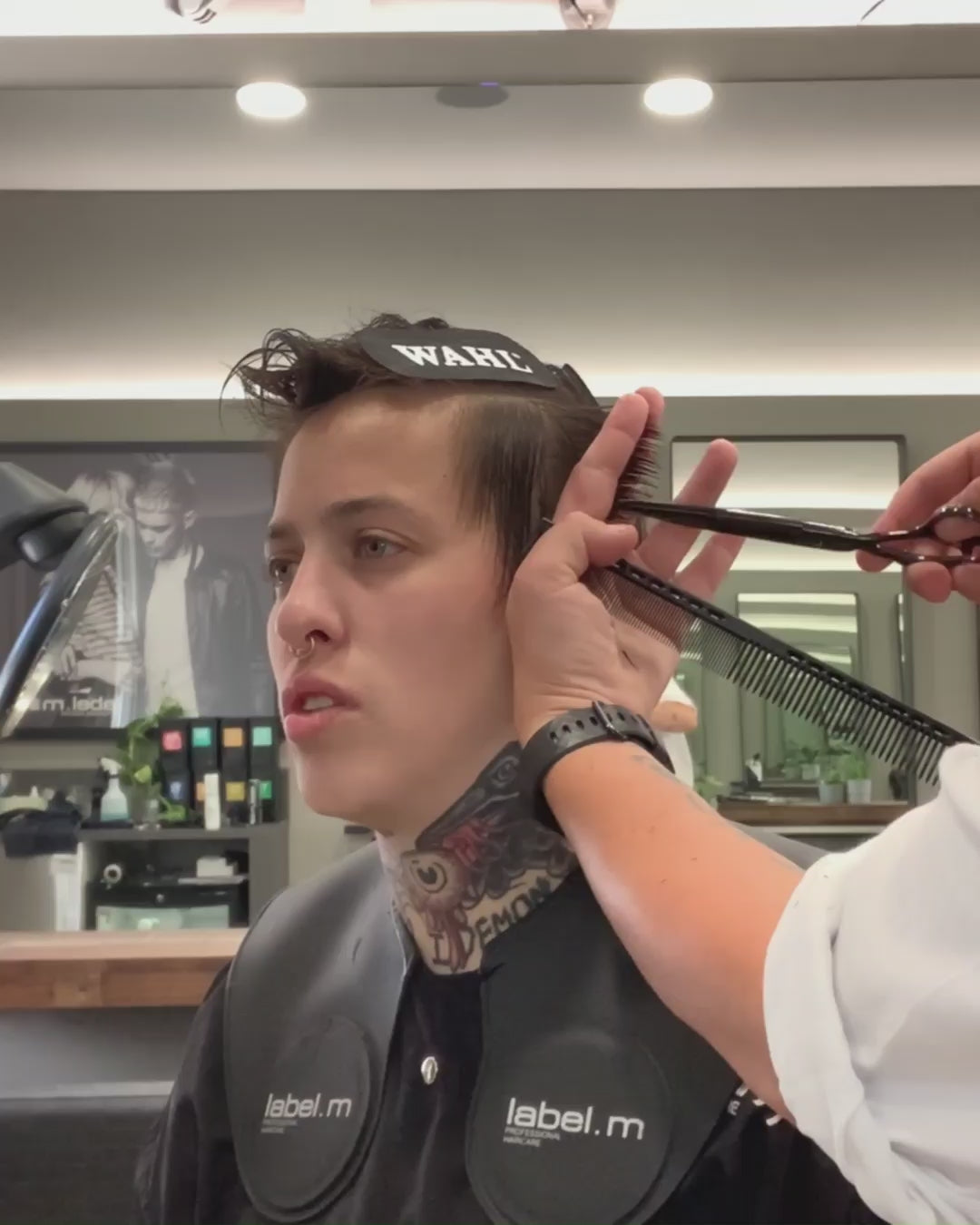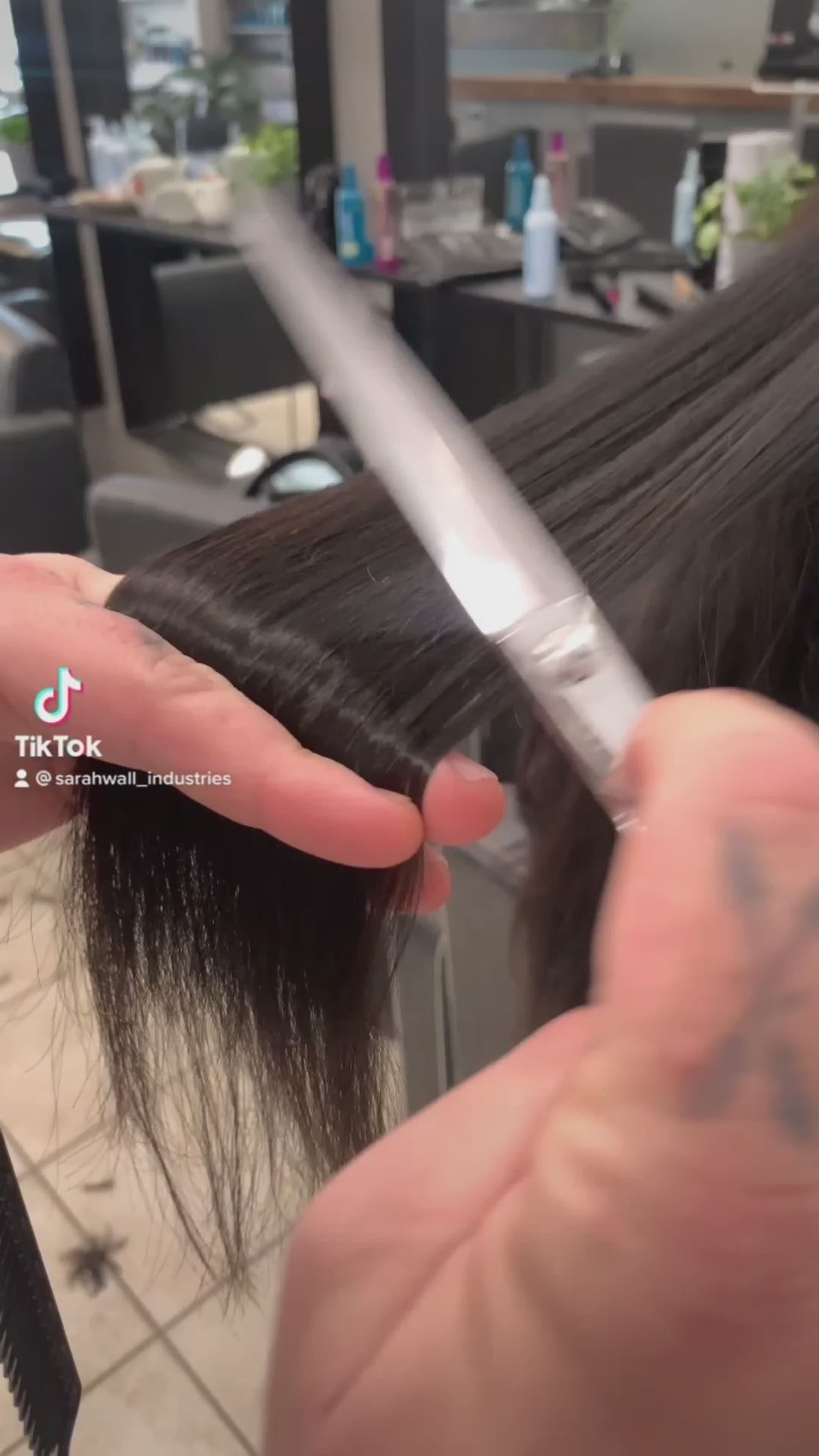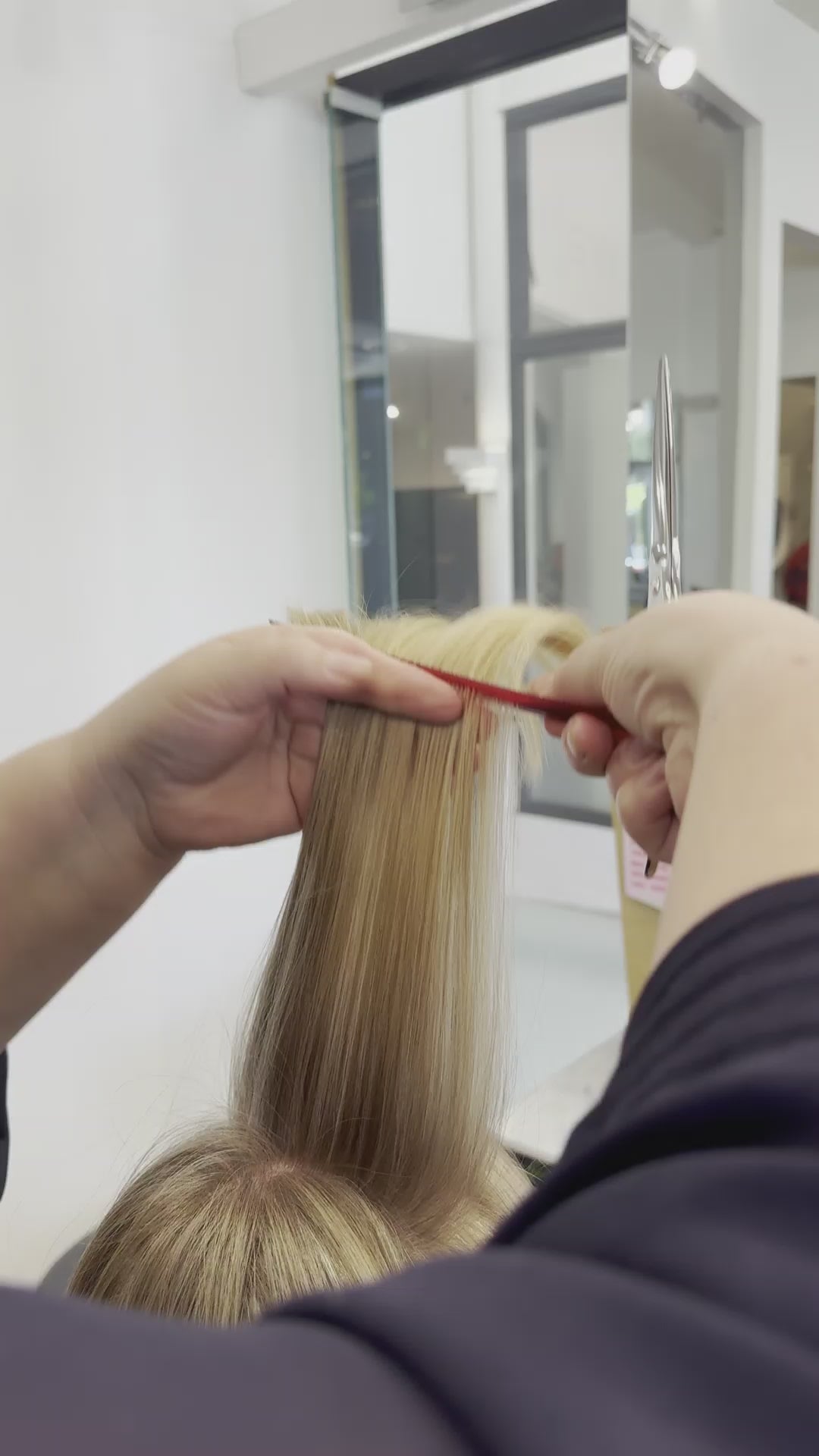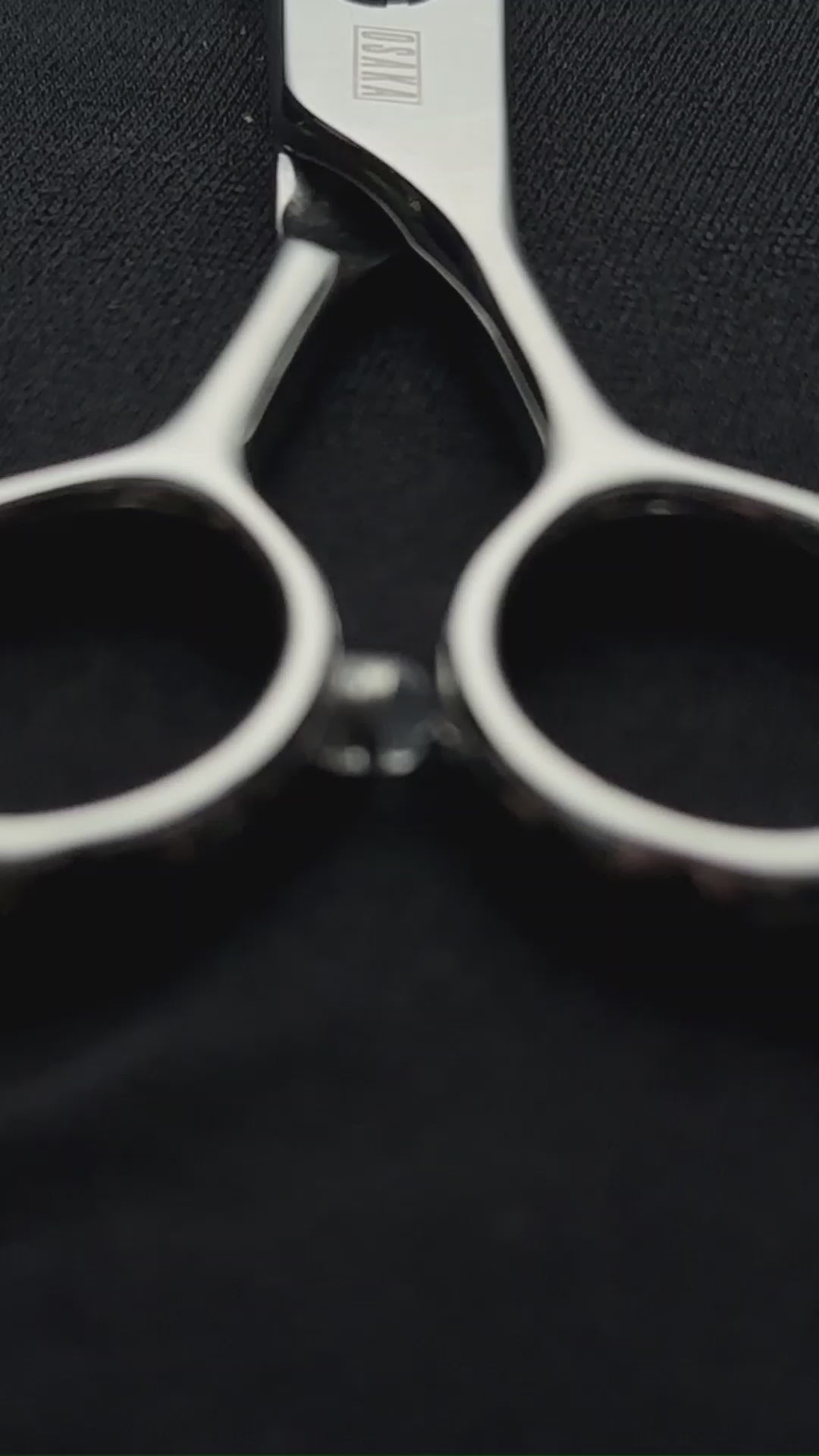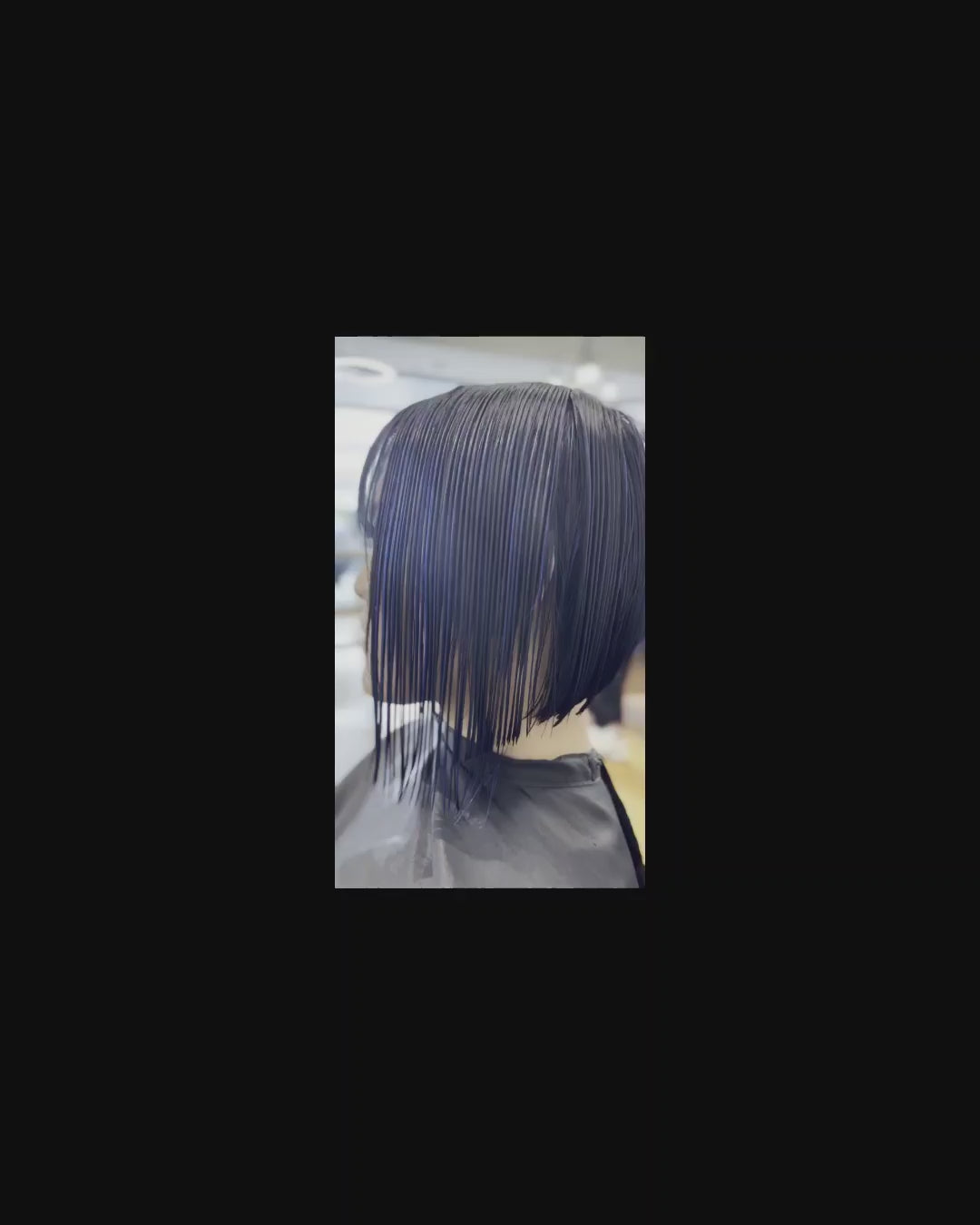Scissor Sharpening 101: A Barber’s Essential Skill

An important skill for barbers to have is how to sharpen scissors as it makes their work high quality and their clients happy. A sharp pair of scissors ensures precision, efficiency, and comfort in haircuts making it a necessary substance in the equipment of a barber. Understanding the intricacies of scissor sharpening could enhance the craft of the barber besides prolonging the life of his/her tools which saves money and time. This article discusses everything that we need to know about scissor sharpening providing an all-inclusive guide that looks at the importance, techniques, and maintenance required for scissors.
The Importance of Scissor Sharpening
A good haircut depends on many factors including the sharpness of your scissors even though this factor is often ignored by most barbers. They produce cleaner cuts keeping away split ends thus giving a sleeker and more accurate final appearance. However dull scissors can cause hair to bend rather than cut cleanly leading to uneven results and potential discomfort.
Also, sharp scissors help increase productivity. Sharp blades cut better with less effort reducing hand fatigue resulting in long working hours without compromising performance. This enhances customer satisfaction because they get fast, precise haircuts devoid of yanking or pain.
Lastly, frequent scissor sharpening is economical. High-quality scissors maintained through proper sharpening techniques guarantee durability limiting replacement needs over time therefore saving money while maintaining professional standards in the provision of services by barbers.
Understanding Scissors Anatomy
To begin learning about scissor sharpening tricks it’s essential first to understand how a pair is made up internally thus functioning correctly when being used by professionals.
- Blades: These as you know are the ones that do cutting action when opened and closed upon each other with various designs like convex bevelled semi-convex e.t.c each has different cutting characteristics depending on user preference or application level; among them convex has the smoothest cut so far using these blades which gives out better clean edge/sharper finish than any other type available on market today.
- Edge: The edge is the part of the blade that cuts. It may be straight or serrated, a straight edge giving clean cuts while the serrated one holds tighter onto hair strands.
- Pivot: Pivot is the point at which two blades meet and move against each other, thus enabling smoothness and ease of cutting.
- Handle: Handle includes finger rings and thumb rings designed to provide comfortable grip and control. For this reason, ergonomic handles reduce strain on the wrist and hand and can be used for a long without feeling tired.
- Tension Screw: The tension screw modifies how tightly or loosely they are held together by adjusting the blades’ tightness in reaction. That way there will always be a good balance between smooth cutting action as well as preventing misalignment among other such problems arising during scissor use.
Understanding all these parts is important to know how to properly sharpen scissors since every part demands maintenance in terms of the sharpening process.
Ways to Make Scissors Sharper
Sharpening scissors use different methods based on the blade type and how sharp you want them.
Whetstone Sharpening
This method involves using a special stone called whetstone to put an ideal finish onto your scissors. Although patience and accuracy are necessary, this technique can yield great results if done correctly.
Steps for Whetstone Sharpening
- Preparation: Soak the whetstone in water for approximately 10 to 15 minutes as a way of lubricating it during sharpening.
- Disassembly: If possible, take apart the scissors so that you can separate the blades. This makes it easier and more efficient to sharpen them.
- Sharpening Angle: Maintain the correct sharpening angle, typically around 30 degrees for most barber scissors. Consistency in angle is crucial for achieving a sharp edge.
- Honing: Glide the blade along the whetstone, starting from the base and moving towards the tip. Apply gentle pressure and ensure even strokes to maintain a uniform edge.
- Polishing: Use a finer grit stone or polishing compound to refine the edge and remove any burrs. This step enhances the sharpness and smoothness of the blade.
- Reassembly: Once both blades are sharpened, reassemble the scissors and adjust the tension screw for optimal cutting performance.
Diamond Sharpening
Diamond sharpeners are preferred because of their fast speed in sharpening tools. These have diamond particles embedded in them that form hard rough surfaces for quick grinding.
Steps for Diamond Sharpening
- Preparation: Ensure that your diamond sharpener is clean and ready for use since some may require lubricating it with water or oil.
- Disassembly: In case possible, one should dismantle their scissors to access each blade separately.
- Sharpening: At a thirty-degree angle or thereabouts, move the blade using the diamond sharpener.
- Honing: To sharpen, slide the blade up and down on a whetstone.
- Polishing: Smooth out the edge with a finer stone or polish to get rid of any rough bits.
Benefits of Professional Sharpening Services
- Expertise: Professionals are knowledgeable in dealing with different types of scissors and blades.
- Precision: Special equipment for precision is used to make sure that the blade is properly sharpened maintaining its quality.
- Convenience: It saves time and effort when one sends their scissors to a professional instead of doing it themselves so that barbing can continue without interruption.
Maintenance Tips for Scissors
Keeping a good pair of shears involves more than just sharpening. Barber scissors need proper care and maintenance which are essential. Below are some tips on how to maintain barber scissors:
1. Regular Cleaning
After use, clean them well removing all hairs, dirt or any other product residuals from the blades using a soft cloth and light soap then let them dry before storage. This prevents rust and corrosion hence the sharpness and long life of the cutting tool are maintained.
2. Lubrication
Regularly lubricate your pivot point as well as blades as this will enhance their performance by enabling smooth movement always go for light oils specifically meant for scissors/hair clippers. Apply a few drops at the pivot region then open& close your shears several times quickly to distribute the oil evenly within it across both sides.
3. Proper Storage
Keep your scissors in cool dry places usually in a protective case or pouches but avoid those areas that might have dampness or humidity capable of facilitating rust among others do not mix with other tools since they can scratch easily even if they are accidentally knocked against another hard object either during transportation or storage process itself sometimes leading to nicks elsewhere at some points especially while being carried along somewhere else such like shop workbench where many items may already lying around at once such as hammers screwdriver boxes etc.
4. Tension Adjustment
Check regularly if there is a need to adjust the tension screw so that blades slide smoothly on each other neither too tight nor too loose. The right tension prevents the blades from wearing out and improves on cutting efficiency. 5. Avoid Dropping To avoid dropping them, be careful when handling scissors. Even a slight fall can affect their efficiency of cutting because the blades might get damaged or the pivot misaligned. Scissors should always be put carefully on a safe surface whenever not being used.
Typical Errors in Scissor Sharpening
Even if honing your sharpening skills is a valuable ability, there are a few errors that might affect the quality of your work. Some common errors include:
1. A Wrong Angle Of Sharpening
The right angle has to be maintained to attain sharp edges on some blades. An improper angle may result in blunt and uneven blade sides. Always keep a uniformity of the angle through this process of making it sharp again.
2. Excessive Sharpen
One can damage their blades much quicker by sharpening them too often. Only sharpen as needed and avoid extraordinary honing.
3. Neglect Polishing
Polishing is a major step that polishes the edge and removes small pieces of metal. This phase ignored may result in rough blades that are not very effective anymore. Always end the process of sharpening with proper polishing.
4. Using Wrong Tools
Using tools meant for another purpose other than scissor sharpening may ruin the blades. Purchase quality sharpening tools or consult skilled services to ensure the best outcomes.
5. Not Minding About Maintenance
Maintaining scissors by way of only having them sharp is not enough. You also need to regularly clean them, lubricate and store them properly for them to continue functioning well all through their life span.
Conclusion
Every barber should learn how to sharpen scissors. This makes the haircutting process perfect, ensures that the customer is satisfied and extends the lifespan of the scissors. The professionalism and excellence of a barber can be reflected through his knowledge of scissor sharpening techniques, meaning that he maintains them properly shown in outstanding conditions as well. To achieve good results and succeed in a barbering career, proper maintenance and regular sharpening are indispensable. To get more insights about it, one can visit Osaka Scissors; a well-known name among those who work with barber tools.





